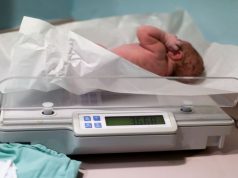Number of twin births declined 7 percent compared with 3 percent decline in singleton births
By Elana Gotkine HealthDay Reporter
WEDNESDAY, Dec. 7, 2022 (HealthDay News) — The number and rate of twin births decreased from 2019 to 2020, according to the Dec. 7 National Vital Statistics Reports, a publication from the U.S. Centers for Disease Control and Prevention.
Isabelle Horon, Dr.P.H., and Joyce A. Martin, M.P.H., from the National Center for Health Statistics in Hyattsville, Maryland, describe the changes in the number and rate of twin births from 2019 to 2021 using data on final counts of births registered in all states and the District of Columbia.
The researchers found that from 2019 to 2020, there was a 7 percent decrease in the number of twin births in the United States, compared with a 3 percent decrease in the number of singleton births. The rate of twin births decreased by 3 percent. From 2019 to 2020, the largest declines occurred in November and December, with decreases of 15 and 19 percent, respectively, in the number of twin births and decreases of 10 and 14 percent, respectively, in the rate of twin births. The total number of twin births increased 2 percent from 2020 to 2021; the increase in twin birth rate was not significant (31.1 to 31.2 per 1,000 births). The twin birth rate decreased by 7 percent in January 2021, then remained stable; rates increased by 7 and 14 percent in November and December, respectively.
“The decline in twin births from 2019 to 2020 may have contributed, in part, to reductions in the overall number and rate of preterm and low birthweight infants born in the United States that occurred between these two years,” the authors write.
Copyright © 2022 HealthDay. All rights reserved.








